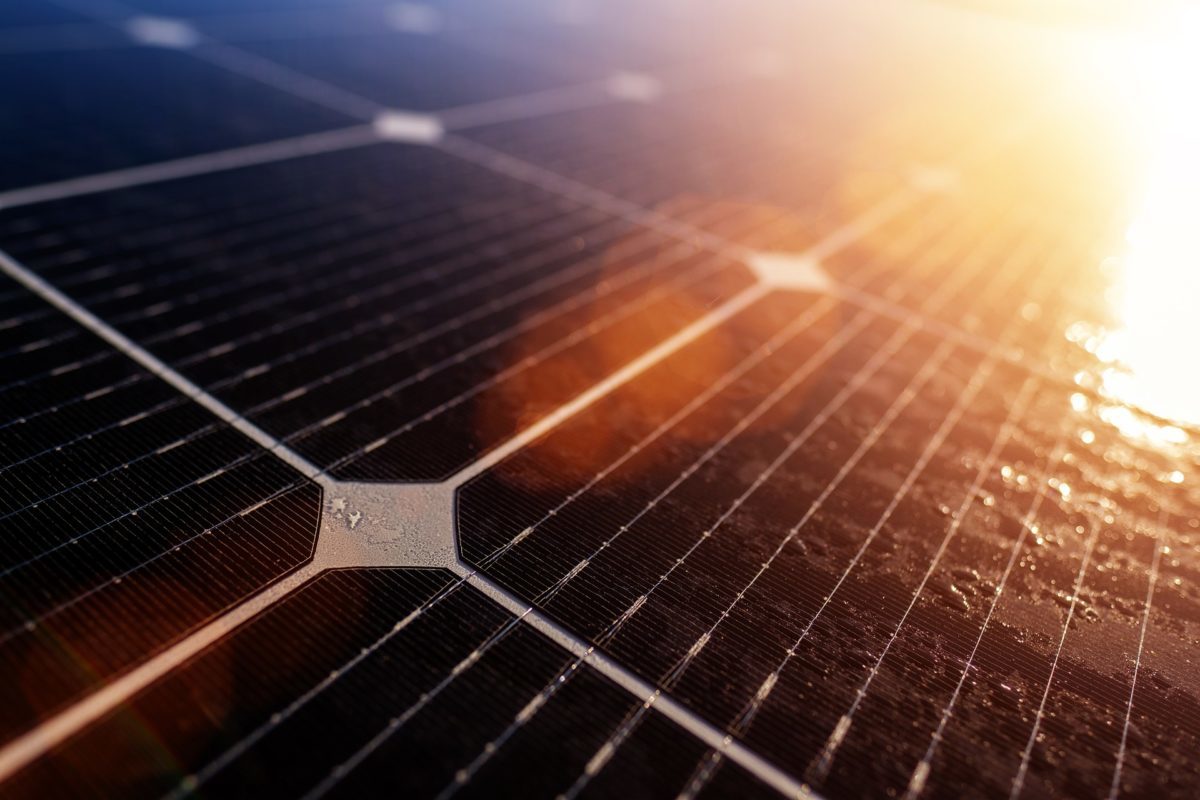A U.S.-Italian research group has fabricated a hybrid thermoelectric photovoltaic (HTEPV) system that is able to recover waste heat from its solar cell and use it to generate additional power output.
The device consists of an optimized thermoelectric generator (TEG) placed in thermal contact with the back of a perovskite solar cell with a surface area of 1 cm² by means of a layer of thermal grease. While in thermal contact, the two units are electrically separated.
“The HTEPV should be used once two main requirements regarding the PV part are met,” research co-author, Bruno Lorenzi, told pv magazine. The first is that they use cells with a wide bandgap. The researchers estimate that cells with an energy gap greater than about 1.6 eV are needed, as large gap cells are less sensitive to temperature in terms of their performance. The second requirement is that the system has sufficient input power to raise the temperature enough.
Heat flows naturally through the TEG because its cold side is kept at room temperature, while its hot side, which is in thermal contact with the cell, is at a high temperature. The Seebeck effect, which is the direct conversion of temperature differences between two semiconductor materials into electric voltage, generates this difference which then translates into additional electrical power.

The scientists decided not to use a spectrum splitting technology, which is generally utilized in these applications, to direct different parts of the solar spectrum towards either the PV or the TEG unit.
“It is more convenient, in terms of final efficiency gains, to keep the solar cell at the same temperature of the TEG hot side, instead of keeping the cell cold but losing much of the recoverable heat,” the academics explained. They said that a wide-gap solar cell based on perovskite was chosen for the device, due to its lower sensitivity to high temperatures.
“Temperature-sensitive materials, such as silicon, lose too much efficiency to make the hybridization convenient,” they said.
The TEG is placed into an evacuated tube to minimize the heat exchange with the environment. It is able to extract waste heat from the solar cell and convey it to its cold plate, where it is dissipated by a fluid. Its cold side is attached with thermal grease to the vacuum chamber bottom and its temperature is controlled with a K-type thermocouple.
“As the TEG part is placed under a difference of temperature a delta of electrical potential is developed between its hot and cold electrodes due to the Seebeck effect,” Lorenzi said. “Thus once the TEG is connected to a load it generates a flowing electrical current.”
The extraction of heat from the solar cell, according to the scientists, can provide efficiency gains ranging from 0.2 to 3.05%. Although the group tested different kinds of wide-gap solar cells for the HTEPV system, it found the perovskite-based devices offer the best performance in terms of power conversion efficiency.
“Evaluating the cost of this technology is not easy, because it depends a lot on the type of system you are considering,” the Italian researchers said. “The thermoelectric material itself has a negligible cost, as very little is needed in volumetric terms per unit of area. What may increase the device’s cost, according to him are the heat sink, the vacuum tube, and the concentrator used for its assembly. “If you develop a hybrid starting from a PV technology that works in concentration and with a cooling system, the cost is very low and there are no problems,” he said. “The other cases must be carefully evaluated.”
The full description of the thermoelectric-photovoltaic device can be found in the paper Practical development of efficient thermoelectric – Photovoltaic hybrid systems based on wide-gap solar cells, published in Applied Energy. The research group includes scientists from the University of Milano-Bicocca and the University of Rome Tor Vergata in Italy, as well as the Massachusetts Institute of Technology (MIT) in the United States.
This content is protected by copyright and may not be reused. If you want to cooperate with us and would like to reuse some of our content, please contact: editors@pv-magazine.com.









By submitting this form you agree to pv magazine using your data for the purposes of publishing your comment.
Your personal data will only be disclosed or otherwise transmitted to third parties for the purposes of spam filtering or if this is necessary for technical maintenance of the website. Any other transfer to third parties will not take place unless this is justified on the basis of applicable data protection regulations or if pv magazine is legally obliged to do so.
You may revoke this consent at any time with effect for the future, in which case your personal data will be deleted immediately. Otherwise, your data will be deleted if pv magazine has processed your request or the purpose of data storage is fulfilled.
Further information on data privacy can be found in our Data Protection Policy.